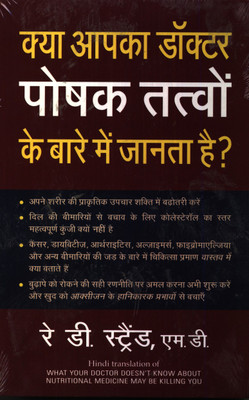
IGNOU BZYET 143 Insect Vectors and Vector Borne Diseases In Depth Easy Guide Book For Ignou Studeny (Paperback, BMA Publication)
Share
IGNOU BZYET 143 Insect Vectors and Vector Borne Diseases In Depth Easy Guide Book For Ignou Studeny (Paperback, BMA Publication)
इस प्रोडक्ट पर राय देने वाले पहले व्यक्ति बने
₹422
₹999
57% off
उपलब्ध ऑफ़र
T&C
T&C
T&C
T&C
Delivery
Check
Enter pincode
डिलीवरी5 अगस्त, मंगलवार
?
अगर 4:59 PM से पहले ऑर्डर किया गया
जानकारी देखें
Highlights
- Binding: Paperback
- Publisher: BMA PUBLICATION
- ISBN: 9786371520965
- Edition: LATEST, 2024
- Pages: 350
सर्विस
- कैश ऑन डिलीवरी उपलब्ध?
Seller
जानकारी
IGNOU BZYET 143 on Insect Vectors and Vector-Borne Diseases involves covering various aspects of insect vectors, the diseases they transmit, and related concepts in a clear and comprehensive manner. While I can't provide a full guidebook, I can outline key topics and suggest resources for each.
Introduction to Insect Vectors and Vector-Borne Diseases:
Overview of insect vectors and their role in disease transmission.
Importance of studying vector-borne diseases in public health.
Basic concepts and terminology.
Classification of Insect Vectors:
Major groups of insect vectors (e.g., mosquitoes, ticks, flies, fleas).
Morphological and biological characteristics of vector species.
Geographic distribution and habitat preferences.
Transmission Mechanisms:
Modes of disease transmission by insect vectors (e.g., biological, mechanical, transovarial).
Vector-host-pathogen interactions.
Factors influencing vector competence and disease transmission dynamics.
Mosquito-Borne Diseases:
Overview of mosquito-borne diseases (e.g., malaria, dengue fever, Zika virus, chikungunya).
Epidemiology, clinical manifestations, and control measures for each disease.
Vector control strategies (e.g., insecticide-treated bed nets, larval source management, genetic control).
Tick-Borne Diseases:
Overview of tick-borne diseases (e.g., Lyme disease, Rocky Mountain spotted fever, tick-borne encephalitis).
Epidemiology, clinical features, and geographical distribution.
Tick control measures and prevention strategies.
Fly-Borne Diseases:
Overview of fly-borne diseases (e.g., leishmaniasis, sleeping sickness, onchocerciasis).
Vector species, transmission cycles, and disease burden.
Control of fly vectors and disease management approaches.
Flea-Borne Diseases:
Overview of flea-borne diseases (e.g., plague, typhus).
Epidemiology, clinical manifestations, and historical significance.
Vector control and disease prevention measures.
Integrated Vector Management (IVM):
Principles and components of integrated vector management.
Interdisciplinary approaches to vector control (e.g., environmental management, community participation, surveillance).
Case studies and successful examples of IVM implementation.
Emerging Vector-Borne Diseases:
Overview of emerging vector-borne diseases and their drivers.
Factors contributing to disease emergence and spread.
Challenges and strategies for surveillance and response.
Resources and Further Reading:
Recommended textbooks for vector biology and vector-borne diseases (e.g., "Medical Entomology for Students" by Mike Service, "Control of Communicable Diseases Manual" by David L. Heymann et al.).
Online resources such as articles, reports, and educational materials from reputable health organizations.
Practice exercises, case studies, and self-assessment tools.
Read More
Specifications
Book Details
| Publication Year |
|
| Exam |
|
| Number of Pages |
|
University Books Details
| Degree/Diploma |
|
| Specialization |
|
| Subject |
|
Additional Features
| Age Group |
|
Dimensions
| Width |
|
| Height |
|
| Depth |
|
| Weight |
|
In The Box
|
Safe and Secure Payments.Easy returns.100% Authentic products.
Back to top




